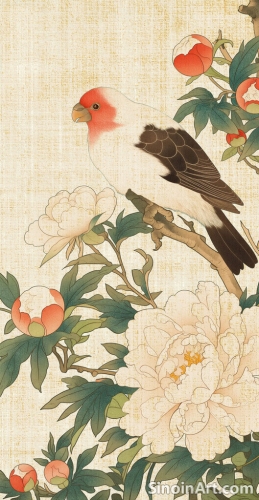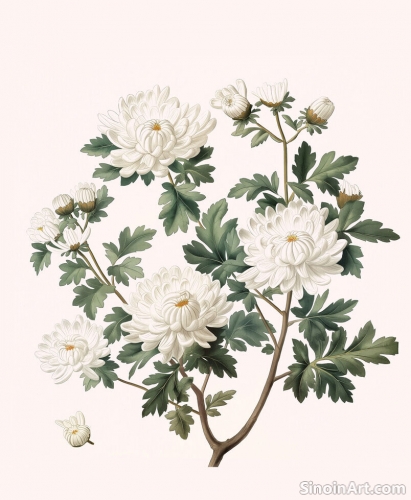Gongbi Painting and the Concept of "Shanshui"
|
While "Shanshui" (mountain-water) painting is often associated with the more expressive style of Xieyi, elements of this tradition are also visible in the more detailed works of Gongbi. Although Gongbi landscapes have a different approach than Xieyi, the underlying principles of Shanshui, emphasizing the balance between yin and yang, and the harmony between humans and nature, are still evident in Gongbi painting.  The Shanshui concept emphasizes the interplay of mountains (yang) and water (yin), two opposing but complementary forces that are essential to the balance of the universe. In Gongbi landscapes, these elements are rendered with meticulous detail, reflecting their natural forms and textures. This detailed rendering is still intended to reflect the principles of the Shanshui.  The representation of space in Shanshui painting, which often relies on atmospheric perspective and the layering of elements to create a sense of depth, also has echoes in Gongbi painting. While not as free and open as in Xieyi paintings, Gongbi artists use meticulous detail to create depth within the painting. This controlled method still conveys the sense of expansiveness.  The careful arrangement of mountains, water, trees, and other elements in a Gongbi landscape reflects the underlying principles of harmony and balance that are central to Shanshui painting. Artists carefully place and proportion the elements within the composition to create balance. This aspect of composition is similar to that found in Shanshui paintings. In addition to the natural elements, Shanshui paintings often include human figures, animals, or buildings. These elements are not just part of the visual landscape, but they also serve to integrate human presence into the larger natural order. This balance between humanity and nature is a core element of Shanshui, and the human element is often seen in Gongbi landscapes as well. The influence of Shanshui on Gongbi provides a deeper understanding of the way in which this art form connects to the broader tradition of Chinese landscape painting and its underlying philosophical principles. While the techniques are very different, there are connections between the styles that can be appreciated through a deeper understanding of the history. |
Tag : Gongbi and Shanshui, Chinese landscape art, yin and yang, nature in art, traditional Chinese painting
Related information
- Gongbi Painting and its Relationship to Calligraphy
- Learning Gongbi: Resources and Pathways for Aspiring Artists
- Gongbi and the Influence of Buddhist Art
- The Role of Line in Gongbi: The Foundation of Precision
- Gongbi Color Techniques: Layering and Luminosity
This article examines the interconnected relationship between Gongbi painting and Chinese calligraphy, highlighting their shared techniques, the importance of line and ink, the concept of qi, and how the study of calligraphy can enhance the skills of a Gongbi artist.
This article provides an overview of resources and pathways for aspiring Gongbi artists, including formal education, online resources, private instruction, and the importance of consistent practice.
This article explores the influence of Buddhist art on Gongbi painting, highlighting the depiction of deities, symbolic use of color, incorporation of philosophical principles, and how this influence adds both spiritual depth and meaning to the artworks.
Explores the critical role of line in Gongbi painting, detailing different types of lines and their contribution to the precision and expressiveness of the art.
Color, while carefully controlled, plays a vital role in creating the refined beauty of Gongbi painting. Unlike the spontaneous use of color in Xieyi, Gongbi artists employ a meticulous approach, building up their colors through numerous thin layers, and creating a sense of depth, luminosity, and subtle gradations of tone. This approach is a hallmark of the Gongbi style and contributes to the richness of its visual effects.